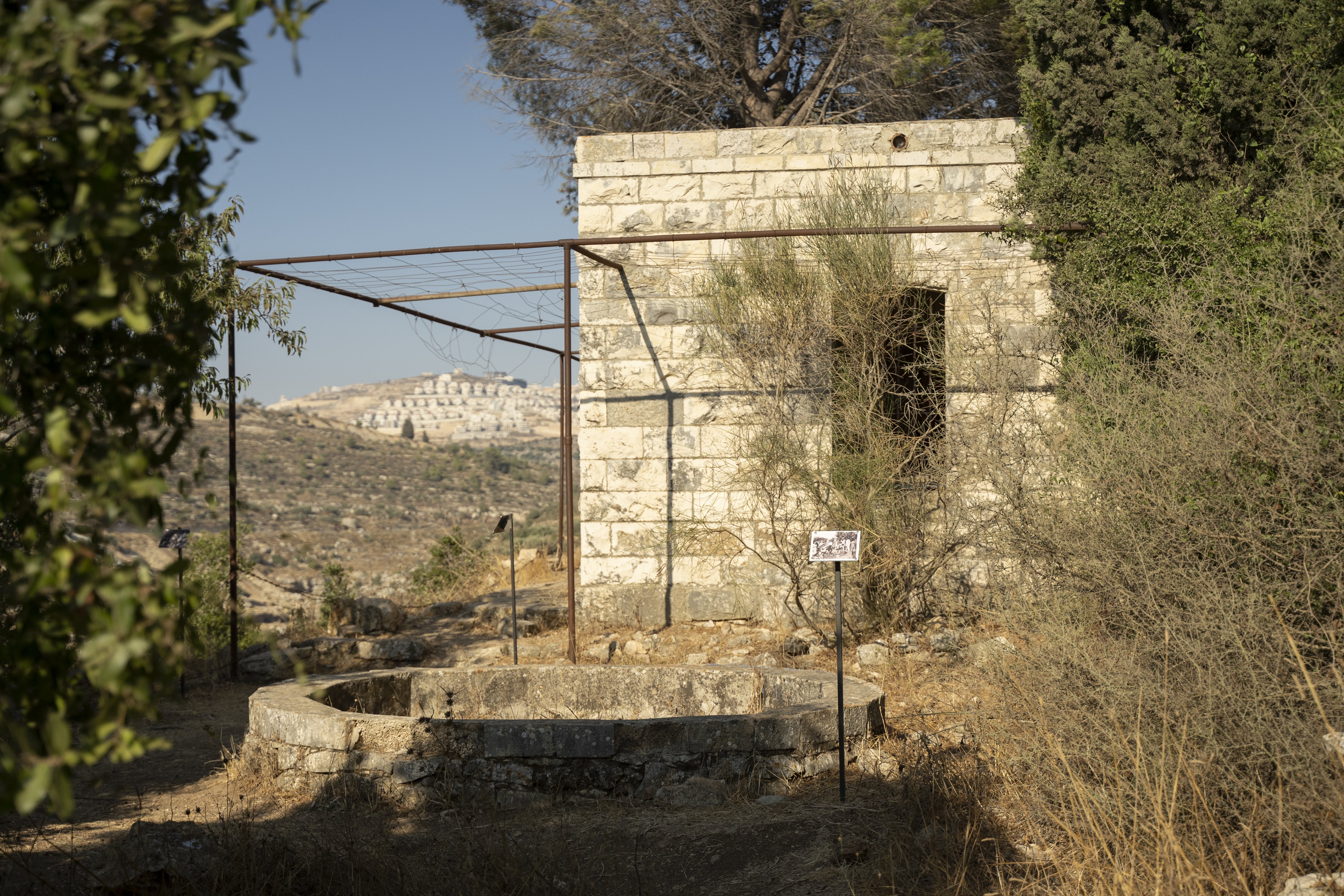Crisis of Distinction
2019
Wood, Steel, Digital Print
An installation consisting of vertically mounted panels displaying on either side text and digital images generated through photogrammetric modeling of an Ottoman Era house in Ein Qiniya, Palestine. The project was exhibited at the MIT Department of Architecture and later at the Sakiya Foundation, the site it depicts. The panels are staggered across several rooms, intentionally placed in a sequence to provide line of sight for two panels at any given moment, alternating between text and image. The installation is imagined as discrete single frames of a spatially distributed virtual tour of the site with accompanying subtitle texts to build a narrative which can be read bi-directionally.
The text probes questions of ambivalent desire and a critique of the aesthetic relations of chance, capture, and memory inherent to past documentation of the site and by extension is concerned with and implicated within histories of orientalism and the politics of technical systems of environmental modeling. The text references and deconstructs writings on the history of photography in the region, including personal diaries of orientalist photographer Maxime Du Camp from 1849-1850, and the writings of Gustave Flaubert, Charles Baudelaire, Fouad Elkoury, and Edward Said. The text uses language regarding the desires, spatial conditions, and ontological implications of a new technology in its relation to the landscape.
The images derive from a simulated reconstruction from photographs of the historic home located in Ein Qiniya, Palestine. The process of photogrammetry allows for the measurement and computational modeling of physical objects. Hundreds of images were interpolated to produce a visualized estimate of the spatial locations of the visual plane of each aligned image, and of overlapping features of the captured space. An ambiguous relationship to the images is intended to destabilize a received expectation of site, with possible registers of archaeological, forensic, touristic, military, conservationist, or a video game qualities present. The work seeks to focus on the different often contradictory, environmentalities and erasures evoked by environmental models through their modulation of conditions of attention, legibility, memory, and agency. In the process of exclusion and inclusion of information, the captured visual information is caught in an empty black space. These gaps of accidental malfunction, leakages of image, and lack of human figures direct scrutiny towards the interpolated production of the photographic character as a conduit of external stimuli, and as index of a subjective encounter in the documentary process.




